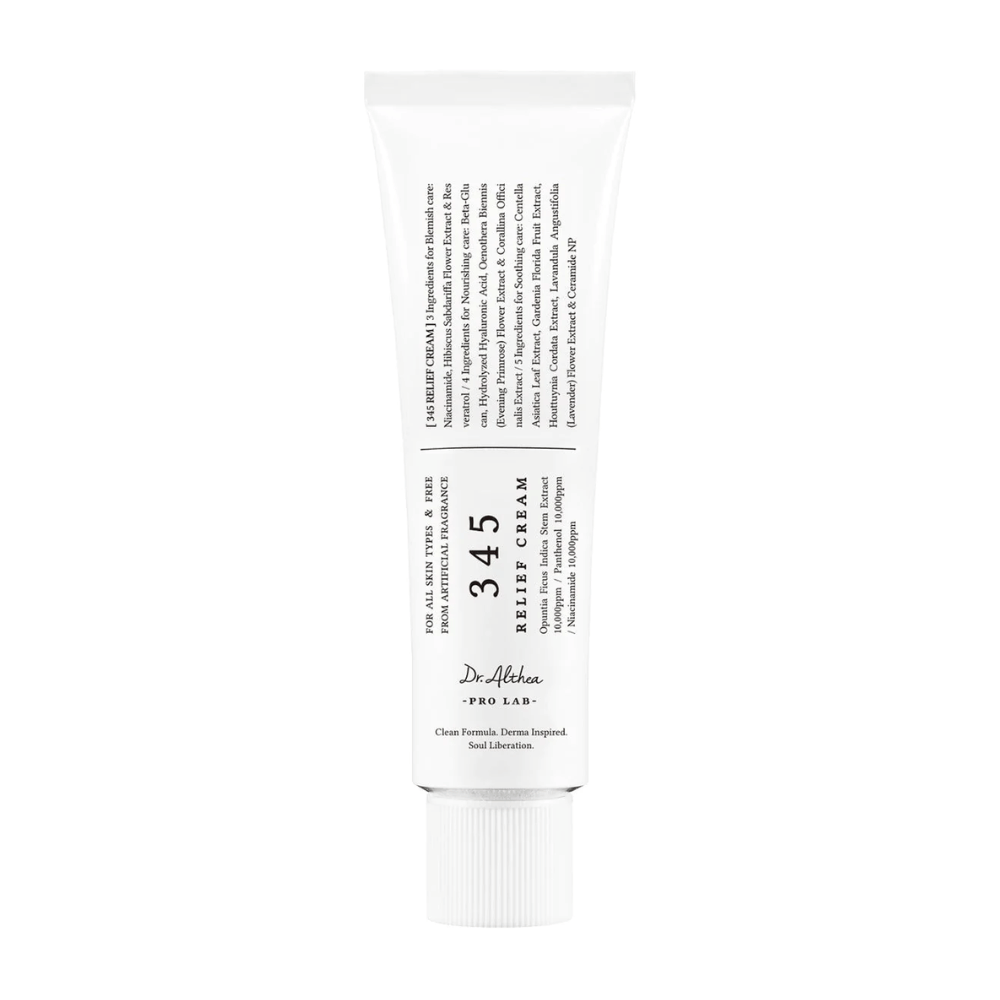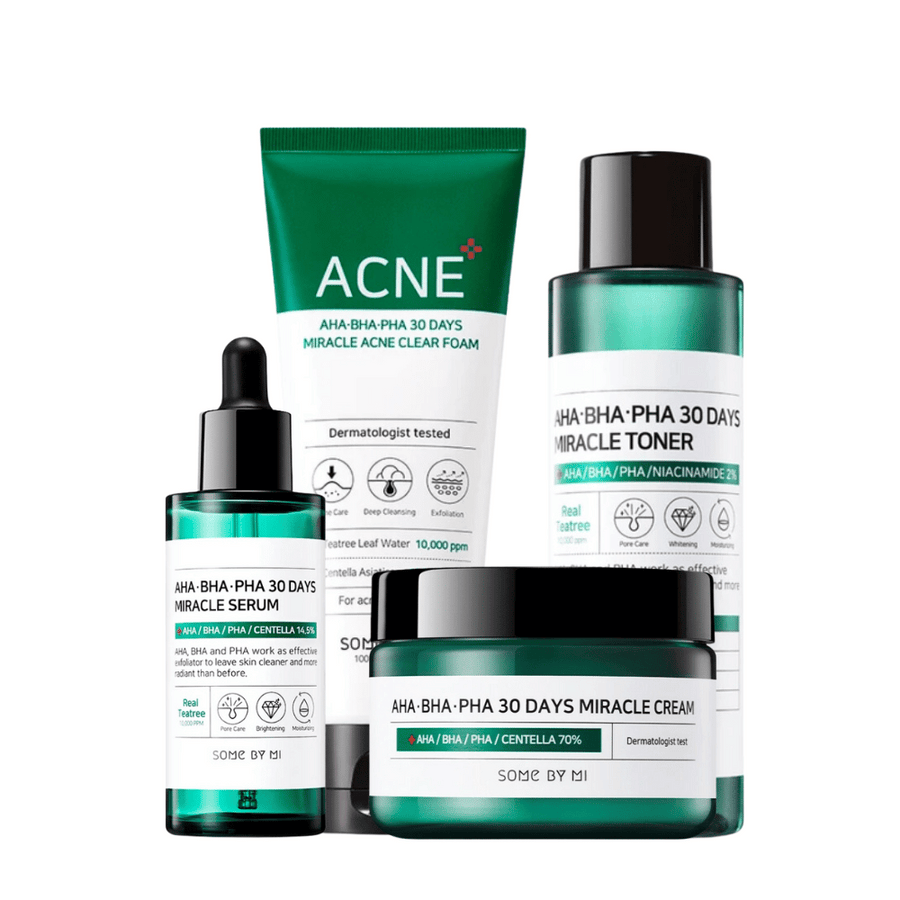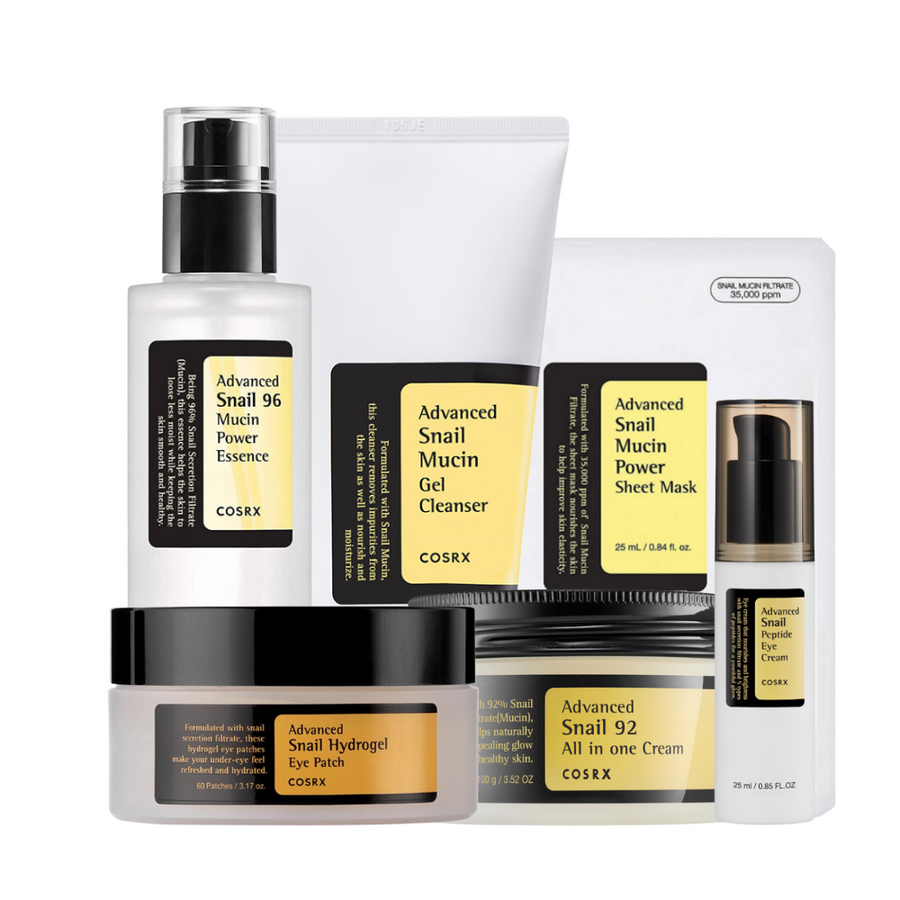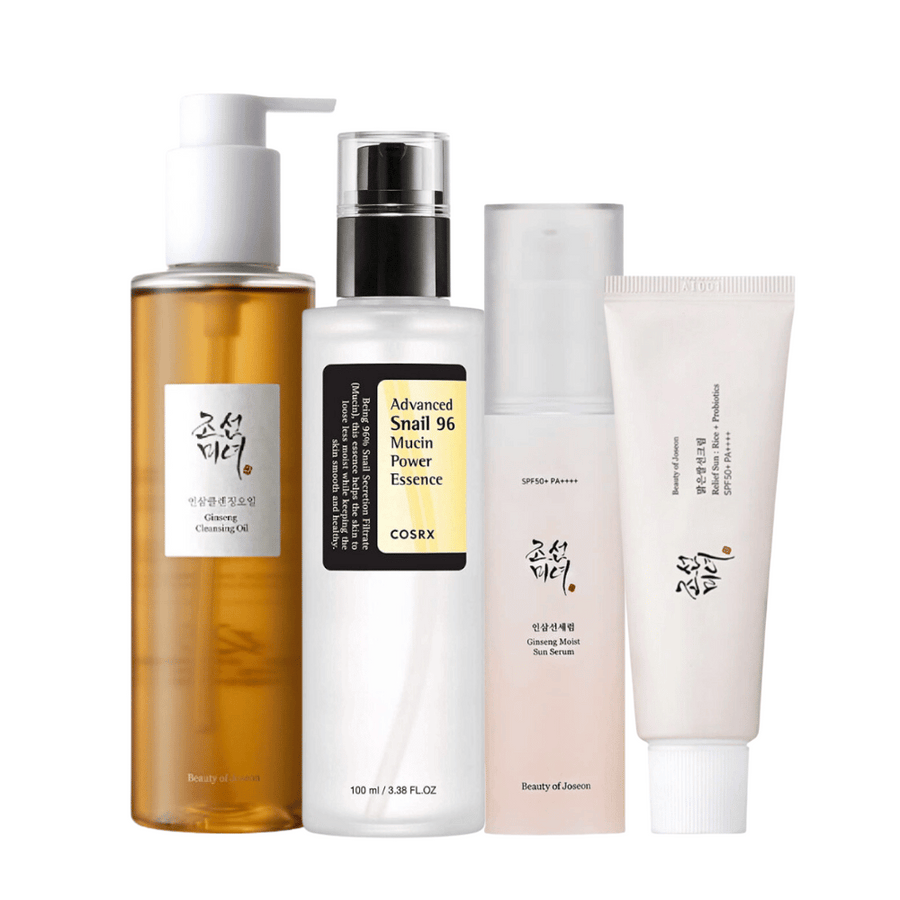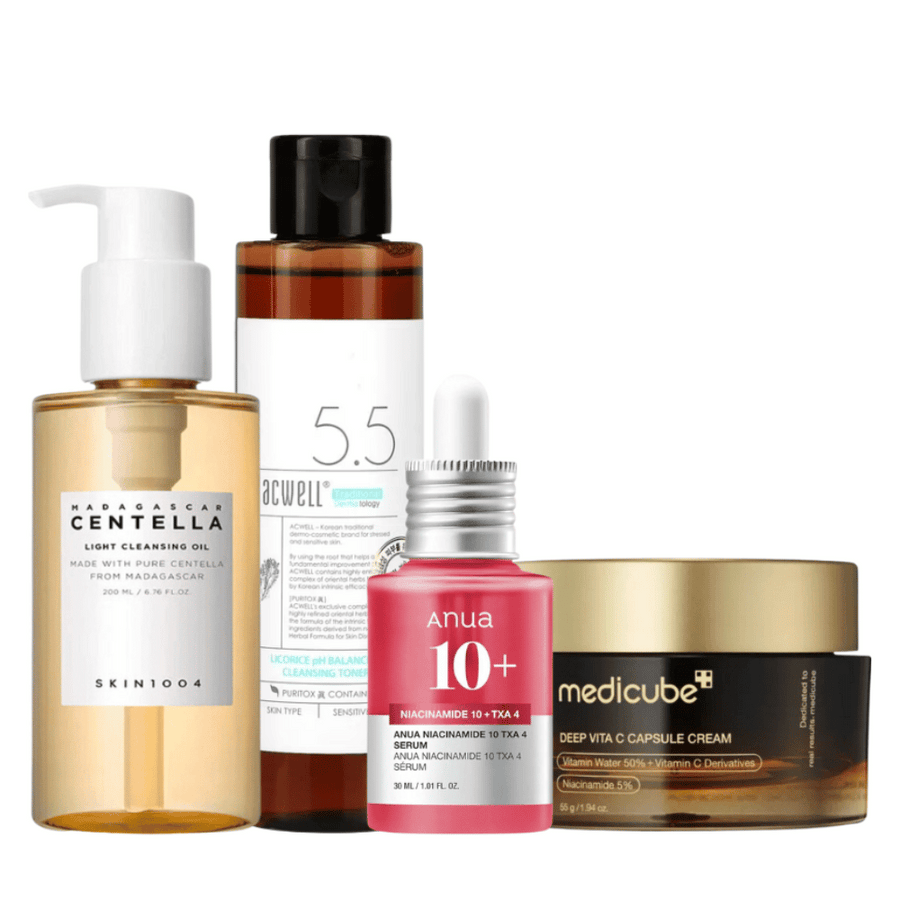Layering in skincare
What is layering?
Have you heard of “layering” in skincare? It can be best described as a layer-upon-layer method, where you apply several skincare products in a thoughtful order to maximize the benefit of each product. Instead of settling for just one face cream, you build a multi-step routine where each layer has its specific function. The concept has become popular among skincare enthusiasts worldwide, much thanks to the Korean 10-step routine, but layering doesn't have to be complicated. The point is to tailor a routine that suits your skin, whether you are a beginner with a few simple steps or a seasoned skincare enthusiast with a whole arsenal of serums. In this blog, we go through what layering means, why it can be effective, and how to layer your products in the right order for the best results.
Why layering is effective
Layering is not just about more products; it's about how the products interact and are absorbed by the skin. By applying products in the right order, you can get more out of each step. Here are some scientific principles behind the layer-upon-layer method.
Absorption and molecular size
The outermost layer of the skin acts as a selective barrier that allows certain substances to pass through while keeping others out. An important factor is molecular size; smaller molecules generally penetrate the skin more easily than larger ones. Therefore, thin, lightweight products (like serums with small molecules) are often applied first so they can penetrate the skin effectively before heavier products are layered on top. Larger molecules stay more on the surface and can act as a protective barrier that “locks in” moisture. This leads us to the golden rule in layering, which is to apply from thinnest to thickest. According to this rule of thumb, you use water-based and fast-absorbing products first and finish with richer creams or oils. If you were to start with a thick, greasy cream, it could prevent thinner products from reaching the skin properly.
pH value and active ingredients
Some active ingredients require a certain environment to work optimally. For example, AHA acids (like glycolic acid) and pure vitamin C (ascorbic acid) need a low pH value to be absorbed effectively and deliver results. Therefore, it can be wise to apply these directly after cleansing when the skin is clean and free from other products that could raise the pH value. Fortunately, layering allows you to place pH-dependent products early in the routine. At the same time, molecular size also plays a role; larger molecules (e.g., some milder acids) may have difficulty penetrating the skin regardless of pH. For most users, it is enough to follow the basic rule “thinnest to thickest,” but if you use products that need a low pH (like strong vitamin C or chemical peels), you can give them a few minutes of leeway before the next layer, especially if you have sensitive skin.
Moisture and skin barrier
Another reason to layer skincare products is to maintain the skin's moisture level and protect the skin barrier Thin, moisturizing layers (such as essence or serum with hyaluronic acid) can deliver water and active ingredients deep into the skin, while thicker layers like moisturizer and oil on top act occlusively, sealing in moisture and preventing it from evaporating. By applying a protective cream last, you create a layer that both prevents dehydration and protects against external stressors. The result is skin that stays hydrated longer and can better absorb the active ingredients.
In summary, layering provides a synergistic effect. The right product in the right order can enhance the effect of the next product. By following the principle of first cleansing, then treating, and finally protecting the skin, you get the maximum benefit from your skincare routine.
Cleansing
Everything starts with cleansing. A thorough facial cleansing lays the foundation for the rest of your routine by removing dirt, excess oil, and old makeup residues that can prevent subsequent products from doing their job. During the day, the skin is exposed to pollutants, sebum, sweat, and sunscreen. If you don't cleanse your face in the evening, you risk clogged pores, which can lead to impurities and poorer absorption of your fine serums and creams. Therefore, cleanse the skin every evening. Use a cleansing product tailored to your skin type, such as a mild gel or foaming cleanser for normal/oily skin, or a creamy cleansing milk for dry and sensitive skin.
Double Cleansing
In the evening, especially if you wear makeup or waterproof sunscreen, you can try the popular double cleansing. This means first using an oil-based cleanser (e.g., cleansing oil or balm) to dissolve makeup, sunscreen, and oil-soluble impurities, and then following up with a water-based cleanser (e.g., gel or foam) to wash away sweat and dirt. Double cleansing provides a deeper clean so that subsequent skincare products can penetrate better. In the morning, a simpler cleansing may suffice, such as rinsing the face with lukewarm water or using a mild facial cleanser to remove the night's sweat and any product residues. Remember that hot water can dry out the skin, so use lukewarm water instead and gently pat the skin dry with a towel.
Toner
After cleansing comes toner, also known as facial water. This step helps to restore the skin's pH balance after washing (as cleansing products can sometimes disrupt the pH slightly) and provides an initial dose of moisture. Modern toners are often filled with moisturizing and soothing ingredients (e.g., glycerin, panthenol, or rose water) that prepare the skin for the next steps. A toner is used on clean skin, either by patting it in with your hands or sweeping it over the face with a cotton pad. The skin should become slightly moist from the toner, think of this as the first 'drink' for your skin after cleansing.
7 Skins Method
A popular method among skincare enthusiasts is the '7-skins method,' where you pat in several thin layers of a toner or essence for maximum hydration. It's not a must, but it shows how toner can be used to really bathe the skin with moisture. For beginners, one layer is enough. If you use both toner and essence in your routine, apply the toner first and then the essence. Essence is a product similar to a light serum, its purpose is to provide extra nourishment and moisture and to soften the skin so that the next product is absorbed better. If you don't have an essence, don't worry, a good toner can do a lot of good on its own.
Serum
Serum is the heart of many advanced skincare routines. A serum is a light, concentrated product often packed with active ingredients that work on specific skin issues. For example, it can be a vitamin C serum for radiance and an even skin tone, a serum with hyaluronic acid for intense moisture, a niacinamide serum to balance oily skin, or perhaps retinol for anti-aging. Thanks to its thin consistency, serum can penetrate deep into the skin and deliver active ingredients where they do the most good.
When applying serum, consider the order if you have more than one. Use water-based serums first, oil-based or thicker serums afterward. This way, the light formulations are absorbed quickly without being hindered by the heavier ones. It's easy to get eager with serums, they sound so miraculous, but avoid using five different serums at once. Instead, choose 1–2 serums that target your most important needs. For example, you can use an antioxidant serum (like vitamin C) in the morning and an exfoliating serum (with AHA/BHA) or retinol in the evening, rather than all at once. Give each serum a minute to sink in before moving on to the next layer, especially if the formulation feels a bit sticky.
If you have areas that need extra love, you can also spot treat. For example, an acne treatment (like a BHA or benzoyl peroxide spot treatment) can be dabbed directly on pimples after your regular serum. The same applies if you use a special eye serum, it is applied before the eye cream. Generally speaking, serum is your “treatment” layer where you can really customize the routine according to what your skin needs.
Eye cream
The skin around the eyes is thinner and more sensitive than the rest of the face. An eye cream is designed to provide this area with extra moisture and treatment without irritation. By applying eye cream after serum but before your face cream, you give the active ingredients in the eye cream a chance to penetrate without having to compete with the thicker moisturizer. Gently dab a small amount of cream under the eyes and on the brow bone (avoid the eyelid itself unless your cream explicitly says it's okay), and pat the cream in with your ring finger. The ring finger has the weakest strength of the fingers, which reduces the risk of pressing too hard on the sensitive area. Eye cream can help counteract dryness lines, dark circles, or puffiness depending on the content – for example, caffeine for swelling or peptides and retinol for fine lines. If you don't have a specific eye cream, you can usually use your regular moisturizer in the eye area, but be extra attentive to any irritation.
Moisturizer (face cream)
After serum (and eye cream), it's time to "lock in" everything with a face cream. The moisturizer, whether it's a light gel cream or a rich night cream, has the main task of hydrating the skin and creating a protective layer that prevents moisture loss. Imagine that you are "sealing" the previous layers in the skin. A day cream is often a bit lighter and may contain antioxidants or perhaps a little SPF, while a night cream tends to be richer and full of nourishing oils or repairing ingredients to help the skin overnight. Choose a cream that suits your skin type, if you are dry, perhaps a balm or cream with ceramides and shea butter, if you are oily, an oil-free gel with hyaluronic acid might be more comfortable.
Don't forget the neck and décolletage when applying cream to your face! The moisturizer is also the step where you can add a face oil if you want extra nourishment. You can either mix a drop of oil into your cream or pat the oil in as a final layer after the cream. Since oils have larger molecules and are occlusive (they form a film), they are excellent as the last step to give glow and lock in moisture. If your skin is very dry, a face oil on top of the moisturizer at night can work wonders. However, if you have very oily skin, you might skip the oil altogether, adjust according to what feels good for you.
Sunscreen/sun cream (SPF)
Last but definitely not least comes the sunscreen. SPF (sun protection factor) is a must in the morning, all year round. It protects your skin against harmful UV rays that cause premature aging, pigmentation spots, and in the worst case, skin cancer. In the layering routine, sunscreen is always the last step in the morning. The reason is simple, the sunscreen forms a protective barrier over the skin, and you don't want to dilute or cover it with anything else on top. No skincare products can penetrate through a proper layer of sunscreen, so if you were to apply serum after SPF, they wouldn't reach the skin. Therefore, sunscreen goes on last, after day cream/oil, and should then be left undisturbed. The only thing you should apply on top of sunscreen during the day is makeup (foundation, concealer, or powder) never other skincare products.
Be generous with your sunscreen, a rule of thumb is to use about half a teaspoon for the face and neck, applying it every morning as the last step in your routine. Also remember to reapply during the day if you are out in the sun for a long time. After all, the best anti-wrinkle cream is sunscreen!
(Note: Of course, no sunscreen is needed in the evening. Your step-by-step evening routine then ends with moisturizer/oil, or perhaps an overnight mask that works overnight.)
Tips for effective layering
Layering skincare is somewhat of an art. Here are some tips to help you get the most out of your routine.
Apply on slightly damp skin
Have you noticed that the skin absorbs face cream better right after a shower? Damp (not soaking wet) skin can absorb products more effectively. Try applying your serums and creams on slightly damp skin, for example, right after toner, or by spraying a facial mist between layers to boost absorption and achieve a lovely finish.
Give each layer time to sink in
No need for an eternity of waiting, but letting maybe 30–60 seconds pass between each product can be smart. This allows the serum or cream to form a thin layer and penetrate somewhat, reducing the risk of the next product “rolling off” or mixing strangely. Take the opportunity to massage in the product during this time, it increases circulation and helps distribute it evenly.
Gentle patting motions
Instead of rubbing in each layer, try patting or dabbing the products (especially serum and toner). It is gentler on the skin and can help press the product in without irritation. Use your ring finger around the eyes for minimal pressure on the delicate skin.
Listen to your skin
Everyone's skin is unique. If you notice that your skin becomes red and irritated by a certain combination (e.g., if you use several strong active ingredients right after each other), consider splitting them up. Vitamin C in the morning and retinol in the evening, instead of both at the same time. Layering should be adapted to what your skin tolerates and feels good with. Sometimes less is more, even for us skincare enthusiasts.
Consistency over quantity
It's easy to think that the more layers, the better the skin, but that's not always true. A simple routine you use consistently beats a super-advanced routine you only manage sporadically. So be realistic, start with a few well-chosen steps (cleansing, moisture, SPF are the base) and build on with serums etc. once you know your skin well. Regularity and patience yield results. Most products need weeks to show effect, regardless of layering.
Common mistakes to avoid
Even the most dedicated skincare enthusiasts can make mistakes. Here are some common layering errors and how to avoid them.
Applying in the wrong order
The order is important. If you start with a thick oil or heavy cream before your active serums, the active ingredients won't reach the skin properly. Always follow the principle of thinnest to thickest, meaning cleansing, toner, serum, cream, SPF. A related mistake is not cleaning properly first, for example, just wiping off makeup with a wet wipe and then applying expensive creams. The skin must be clean for skincare to penetrate, better to clean with a mild cleanser than with just makeup wipes.
Too many active ingredients at once
If you layer several strong products like acids, vitamin C, and retinol at the same time, you risk irritation, redness, or breakouts instead of glow. More is not always better! Introduce new active ingredients one at a time and give the skin a chance to get used to them. You can absolutely have an advanced routine with both acids and retinoids, but spread them out over the week or day, e.g., acids on certain days, retinol on others, or one in the morning and one in the evening if your skin easily becomes sensitive.
Skip serum or SPF
Some skip the serum step entirely, “is it really necessary?”, or forget sunscreen at the end. Serum is actually a key step for addressing specific needs, as they contain higher doses of active ingredients that bind moisture or renew the skin. And SPF, as mentioned, is non-negotiable during the day. Skipping sunscreen basically sabotages all the good you’ve done before, especially if you’ve used active ingredients that make the skin sun-sensitive. So avoid these mistakes. Let a suitable serum become your skin’s best friend, and always top it off with sunscreen in the morning.
Wrong product for the wrong skin type
If you layer products that are not suited for your skin type, the result will falter. For example, an oily, acne-prone skin bombarded with rich oils and heavy creams can get more breakouts, and a dry, sensitive skin that overdoes it with strong drying toners or exfoliation can become even drier and irritated. Layering is all well and good, but choose the right products for your skin, otherwise the order does no good. Adapt according to needs (more on that below!).
Impatience and overload
Applying ten layers overnight does not provide a miracle solution. On the contrary, the skin can become overwhelmed. Avoid overloading the skin with too much at once. If you notice that the skin starts to pill or feels sticky long after your routine, it may be a sign that you are using too much product or too many layers. Better a few well-absorbed layers than a thick layer of everything. Build up your routine gradually and evaluate which steps actually benefit.
Adapt layering according to skin type and skin condition
Just like all skincare, layering should be adapted to your skin type and current skin condition. Here are some guidelines for different skin types.
Dry skin
Dry skin lacks both moisture and oil, so the focus should be on maximum hydration in several layers. Layering is perfect for you with dry skin, you can advantageously use a Essence in addition to your toner for extra moisture, perhaps apply two different serums (e.g., one with hyaluronic acid followed by one with ceramides or niacinamide) and then a rich moisturizer. Avoid drying steps like alcohol-laden toners or excessive exfoliation. A facial oil as the last step in the evening can help seal everything in and nourish the thirsty skin.
Oily skin
Oily or greasy skin also needs moisture, but in a lighter format. A common mistake is trying to dry out oily skin, but that can trigger even more oil production. Instead, opt for lightweight, oil-free formulations such as a toner with BHA (salicylic acid) that can keep pores clean, a serum with niacinamide that reduces sebum production, and a gel-based moisturizer. Avoid heavy creams and greasy oils (like coconut oil or shea butter) that can clog pores. Layering for oily skin may involve fewer layers overall, but make sure the layers you use truly address shine and impurities. Don't skip the moisturizer, balanced hydration can actually calm the sebaceous glands so the skin becomes less oily over time.
Sensitive Skin
If you have sensitive skin, it's important to be extra careful with both what you apply and how many layers. Keep the routine relatively simple and focus on mild, hypoallergenic products without strong fragrances or alcohol. Layering can absolutely work for sensitive skin, but introduce one new step at a time and patch-test new serums on a small area first. A tip is to use a “buffer” if you want to try active ingredients, for example, applying a layer of soothing serum or light moisturizer before applying a potentially irritating product like retinol, to mitigate the effect. Sensitive skin benefits from ingredients like aloe vera, oats, panthenol, and ceramides that strengthen the skin barrier. Build up your layering slowly and let the skin rest with a simple routine on some days if it feels overloaded.
Acne-Prone Skin
For acne-prone and impure skin, layering can help you combine pore-cleansing and soothing steps. The key here is to keep the pores as free as possible while not drying out the skin (dehydration can cause the skin to produce even more oil in panic). Start with thorough but gentle cleansing, preferably double cleansing if you use heavy makeup or sunscreen. A toner with a bit of acid like salicylic acid/BHA can be used to lightly exfoliate daily or a few times a week, it goes early in the routine and helps keep the pores clean. Follow up with a treatment serum for acne. Common choices are niacinamide to reduce sebum and redness, or a serum with tea tree, AHA, or retinol to increase cell turnover and counteract pimples. Be careful not to apply too many acne treatments at once, do not combine strong over-the-counter acne cream, acids, and retinol all at once, but spread them out over your morning/evening routine or different days. Always finish with an oil-free, non-comedogenic moisturizer to hydrate without clogging, and don't forget sunscreen during the day, especially important if you use exfoliating acids or retinoids, which make the skin more sun-sensitive. With the right layering, you can both treat acne and keep the skin sufficiently calm and hydrated. A balanced skin barrier heals pimples faster and gets fewer new breakouts.
Finally, remember that skincare is very individual. Layering is a method, not a competition in the number of products. Start small and adjust based on how your skin reacts. Hopefully, this text has given you both new knowledge and inspiration to experiment with your own dr routine in layering. Good luck on the journey towards healthier, happier skin!

Amanda Jensen
Amanda is a passionate beauty expert with extensive experience in Korean skincare, haircare, and makeup. She loves testing new products, delving into ingredients, and sharing tips that help you find what truly works. You can reach Amanda at info@koreanbeauty.se for questions or feedback.



